Telling the story of Disney and Universal’s theme parks isn’t easy. Some of these are parks have lifetimes now measured in decades, generations, or human lifespans. Like people, their stories are full of growth, change, “phases,” mistakes, reversals, triumphs – and often, core pieces of their identities that tend to stick around for their whole lives even as they change and arrange around them.
Over the years, I’ve tried to create unusual new “lenses” to see these parks – from the “personalities” told by their pathways to their ride count relationships; diagrams of how their ride lineups compare to unexpected timelines; leaps into “armchair Imagineered” futures, to hand-illustrated layouts of their rides. Each only captures a small piece of the real story of how these parks evolve over their lifetimes. Today, I want to introduce another.
I call these diagrams LANDLINES – timelines of the lands that have come and gone from each of these parks. My hope is that these “zoomed out” views of the spaces inside of these parks will provide yet another lens to tell their stories; ways for even us diehard fans to somehow see the parks a little differently. I hope you enjoy.
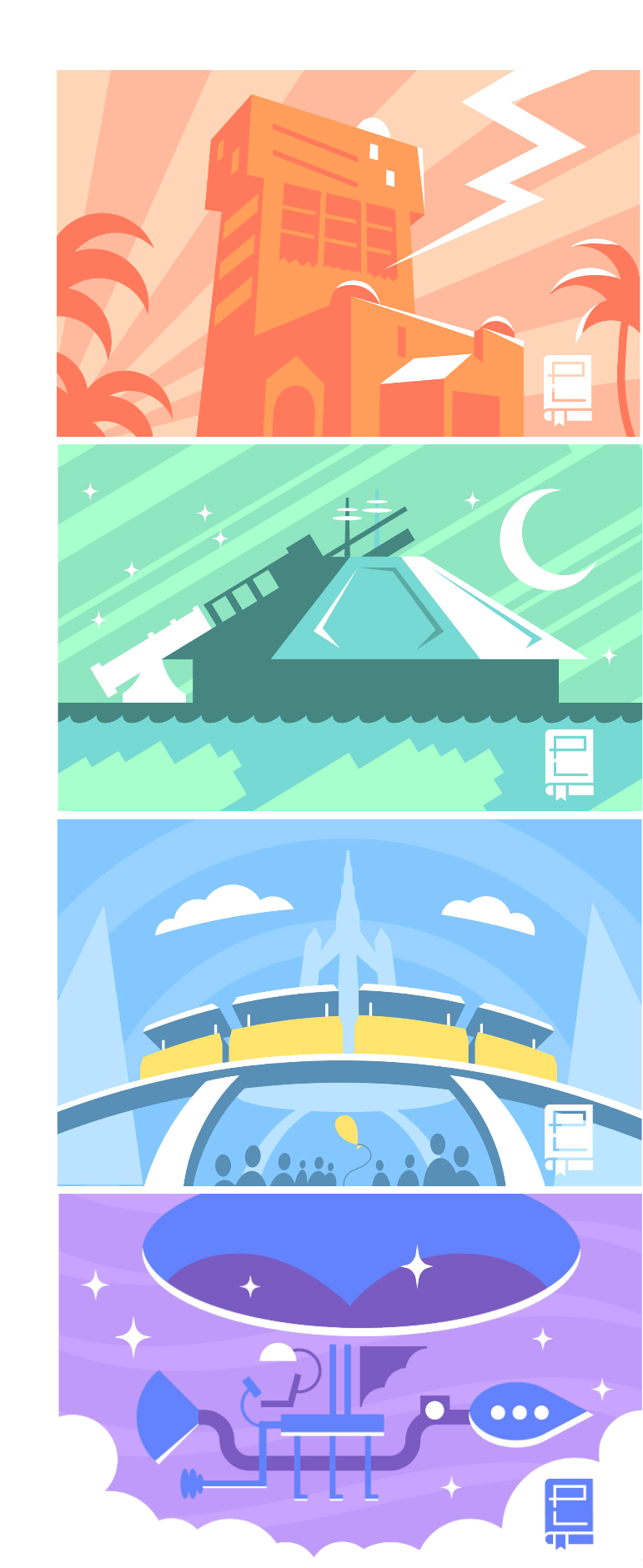
This in-depth article is just one entry in Park Lore’s one-of-a-kind Special Features collection, where we explore the threads that connect between rides, parks, and pop culture! From Imagineering’s secret Society of Explorers and Adventurers, to the history of Chuck E. Cheese; from Disney and Universal’s AVENGERS: “Custody War” to the two-part tale of animation’s rebirth in the generation-defining ’90s Disney Renaissance!
Special Features are typically available exclusively for those who support this evolving theme park history project with a monthly Membership. It’s been unlocked for a limited time, but if you enjoy what you read, consider becoming a Park Lore Member for as little as $2 / month!
1. Disneyland
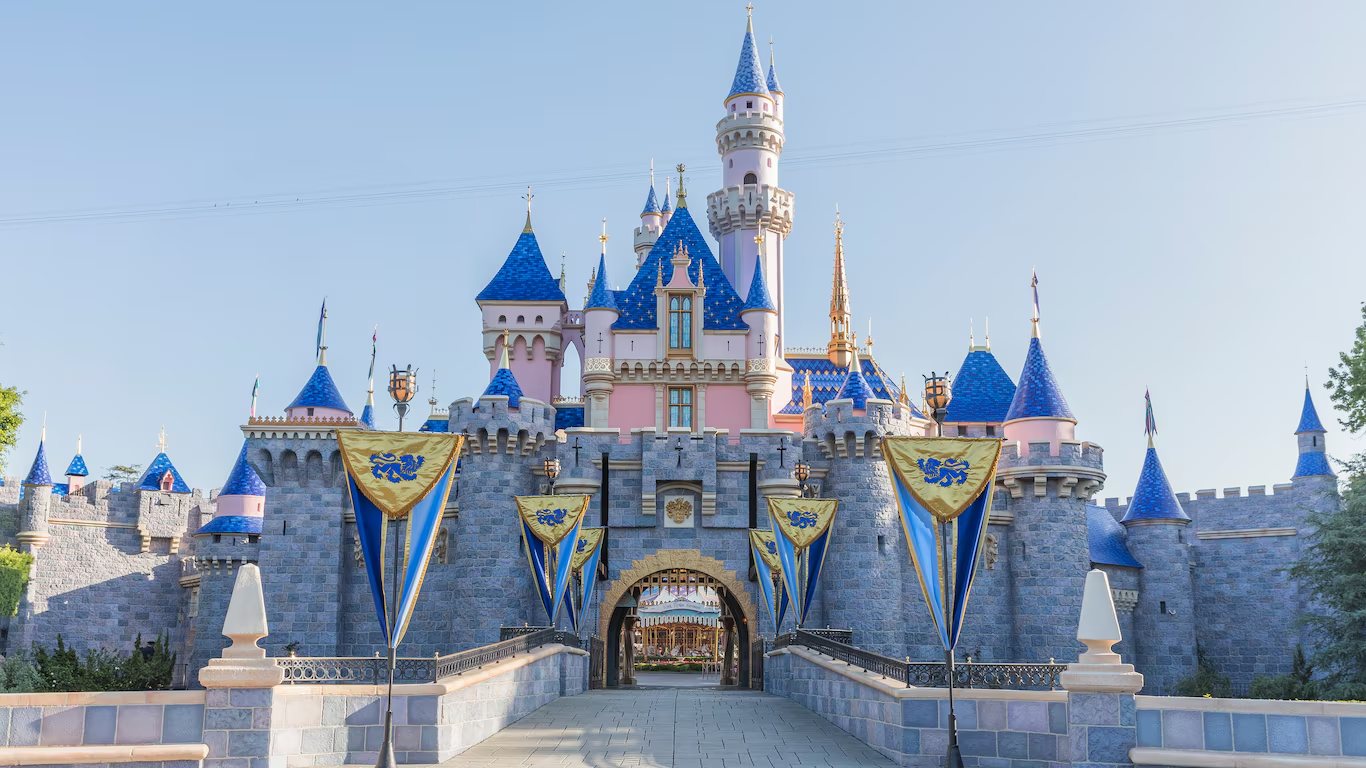
It’s hard to imagine a stronger, steadier, and more timeless debut set than Main Street, Adventureland, Frontierland, Fantasyland, and Tomorrowland. Indeed, those five lands – or at least, their DNA – can be found at nearly all five other “Castle Parks” on Earth. These literary, genre-centered lands are part reverent and historic, but part romance and fantasy, giving them the breadth and flexibility that allows them to remain adaptable to each generation’s shared, collective consciousness.
To that end, the diamonds on the timeline represent major reimaginings. For example, Tomorrowland became a mid-century wonderland in 1967, then a brass retro-future in 1998; Fantasyland shed its Medieval tournament tent facades in 1983 when a New Fantasyland created a charming European hamlet; and Adventureland was radically “aged” in 1994 so that it could fit into the 1930s timeline of the Modern Marvel: Indiana Jones Adventure.
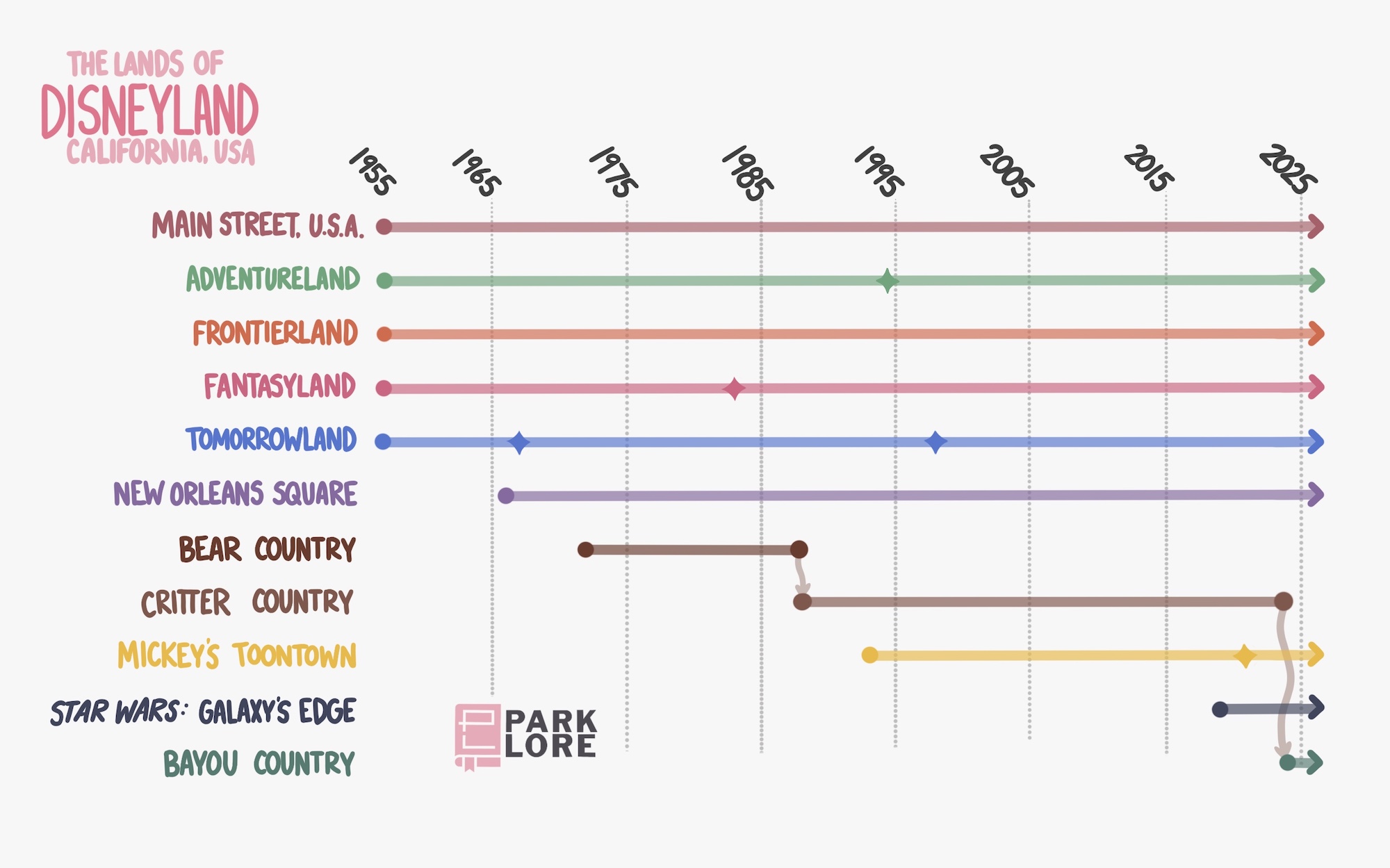
In park-to-park comparisons, Disneyland always ends up in a prominent position – including famously having more rides, more dark rides, and more E-Tickets than any other Disney Park on Earth. A look at its “landline” reveals another factor by which Walt’s original park is remarkable: its relative consistency across seven decades! Maybe that’s to be expected of the park that “started it all,” but counterpoint: how cool is it that Disneyland got so much right that its foundational structure still remains from seven decades ago?
Despite being “hallowed ground,” Disneyland has introduced new lands, too. Walt himself oversaw the 1966 opening of New Orleans Square – considered by many the finest “classic” land at any park.
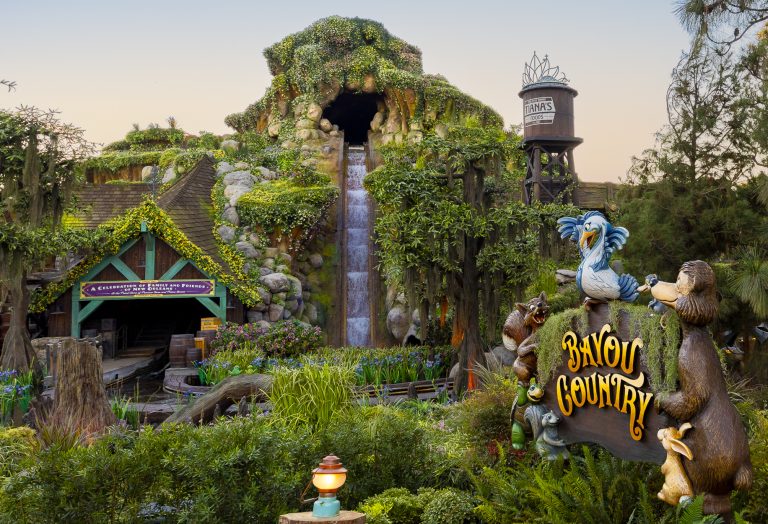
Just six years after that, the Lost Legend: Country Bear Jamboree became the first attraction to be copied from the then-new Disney World back to Disneyland instead of the other way around, turning a vestigial part of Frontierland into a new land altogether: Bear Country. (That land has undergone broad re-themes twice. The 1989 introduction of Splash Mountain turned it into the broader Critter Country, then that ride’s reimagining as Tiana’s Bayou Adventure in 2025 narrowed the land back down into Bayou Country).
After Mickey’s Toontown joined in 1993, the park’s lineup stabilized for decades. It took major reworking of the park’s backstage facilities and an incredibly elaborate re-routing of the Rivers of America to fit a ninth land – Star Wars: Galaxy’s Edge in 2019. The gargantuan, 14-acre land themed to a single science fantasy franchise (which Disney acquired with its 2012 purchase of Lucasfilm) is out of scale with Disneyland in a lot of ways, but given the direction of Disney Parks, it’s unlikely to be the last IP-focused land wedged into Walt’s original magic kingdom!
2. Magic Kingdom
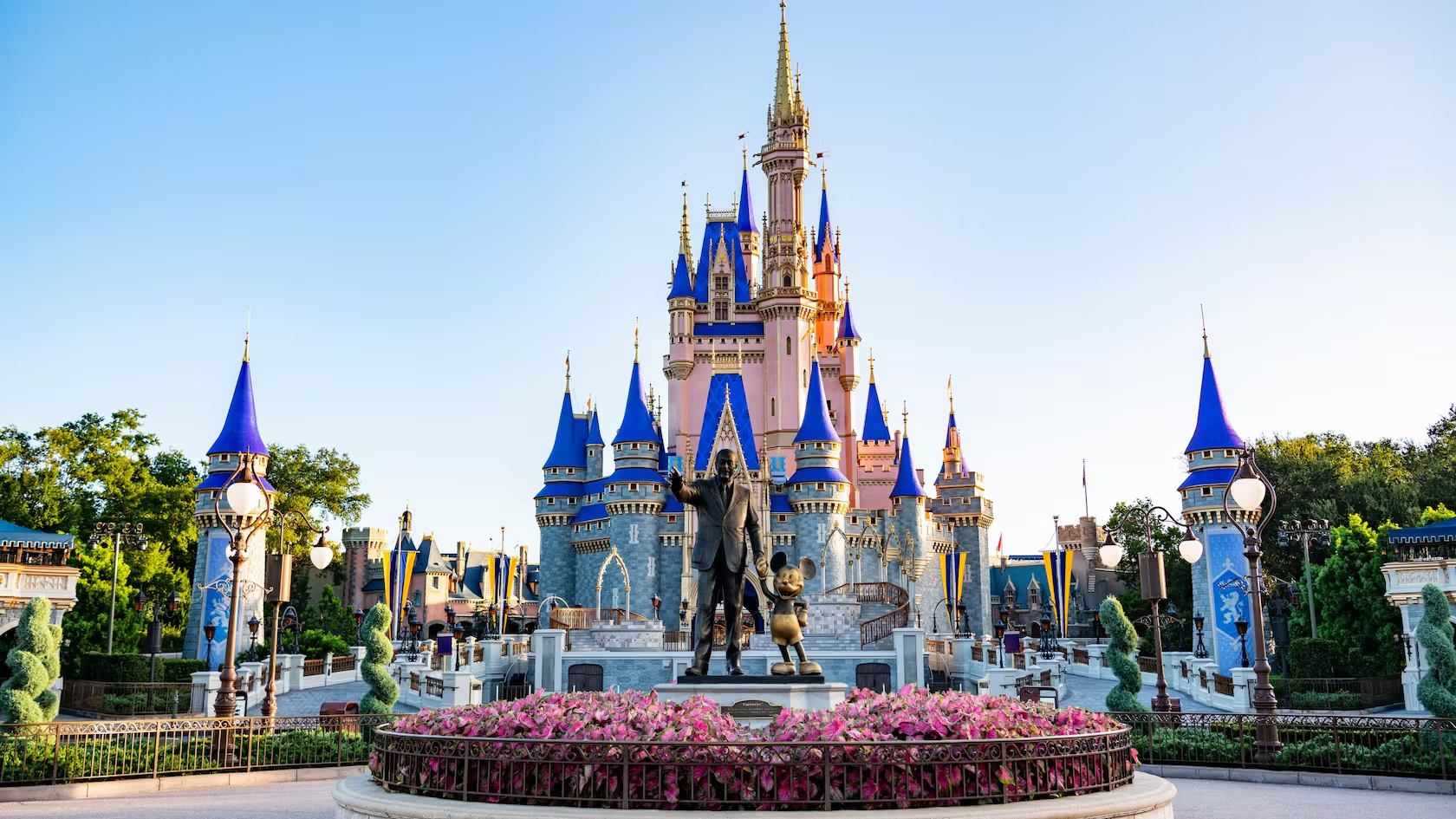
The second Disney Park, Walt Disney World’s Magic Kingdom, was of course a fairly straightforward adaptation of Disneyland as it appeared in the late 1960s, just upscaled and made more efficient as a purpose-built international destination and “Vacation Kingdom.” It opened with the same lineup as Disneyland at the time, but swapping New Orleans Square for Liberty Square – ostensibly, more interesting to Floridians for whom New Orleans’ culture and cuisine was considered too close to home.
Magic Kingdom has actually seen a lot less change than Disneyland in terms of its lands. The park received a comic book, sci-fi-deco “New Tomorrowland” in 1994, and a New Fantasyland (born of the post-Wizarding World, immersive “Living Land” aesthetic) in 2012. Its Frontierland is also angling for a major reimagining that’ll see the park’s Rivers of America filled in for an outdoor, off-roading ride themed to Pixar’s Cars.
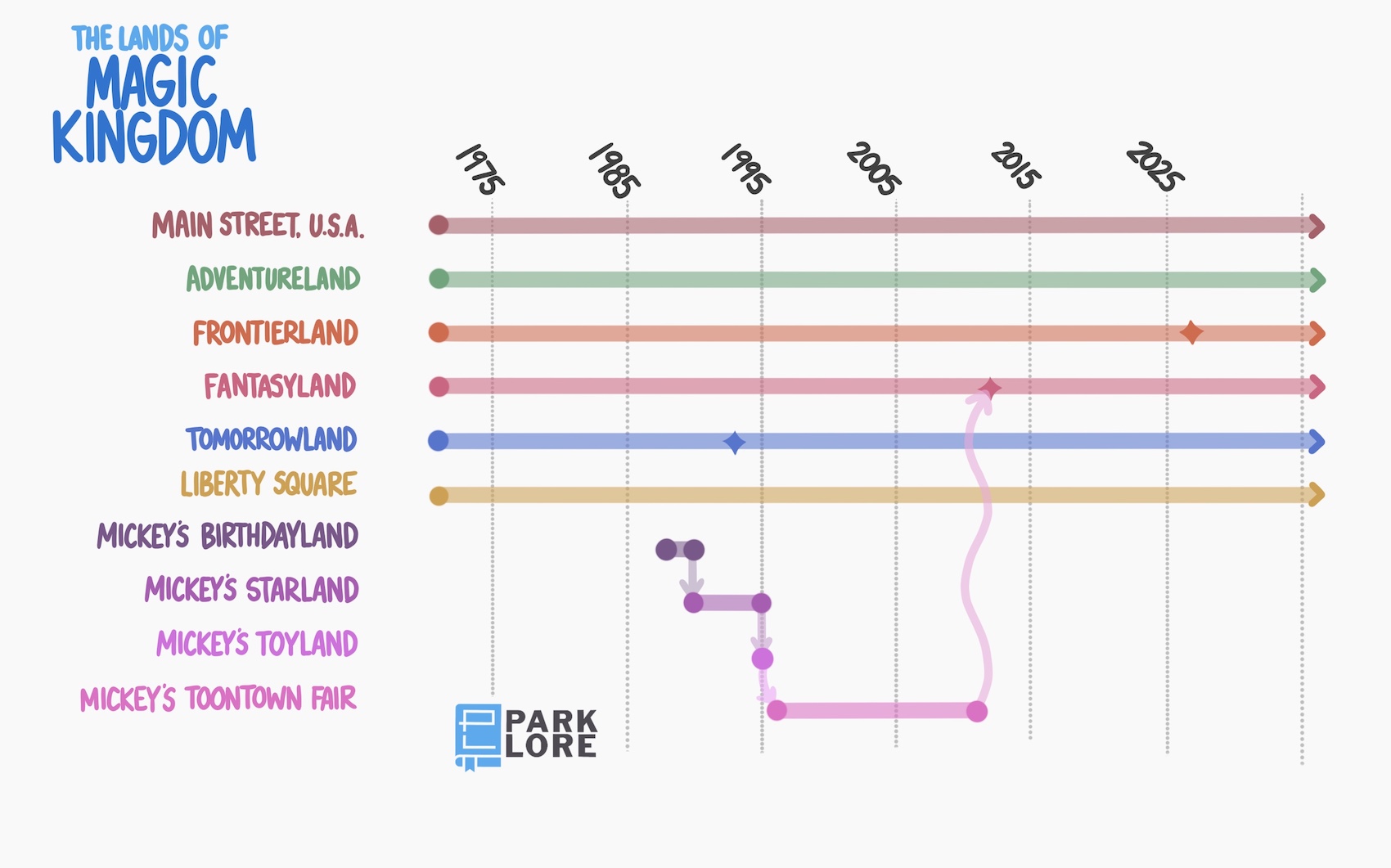
Disney also promises that eventually, we’ll see a long-rumored land themed to the Disney Villains franchise, but insiders expect that it couldn’t even possibly exist until the 2030s – farther than this timeline looks ahead.
So the only genuinely new land the park has ever added was 1998’s “temporary” Mickey’s Birthdayland – which included Mickey’s House, a petting zoo, and “birthday tents” of meet-and-greets – to celebrate Mickey Mouse’s 60th birthday. Mickey managed his make his birthday party stretch on for two years, but even once the party ended, the “temporary” land didn’t. Instead, it was renamed Mickey’s Starland. It stayed that way for five years, briefly becoming Mickey’s Toyland has a holiday tie-in for 1995.
In 1996, Imagineers finally decided that the “temporary” land wasn’t going to be so temporary and brought in some permanent features. Donald’s Boat appeared with a new splash pad, the farm gained “Goofy’s Barnstormer” family coaster, and Minnie finally got a house, creating Mickey’s Toontown Fair – a country home for the toons when not in Disneyland’s Toontown. All of it resorbed into Fantasyland as part of the land’s 2012 reimagining, becoming the less-toony “Storybook Circus” restoring Magic Kingdom to its opening day land lineup. That’ll change when a Villains land opens sometime in the future.
3. EPCOT
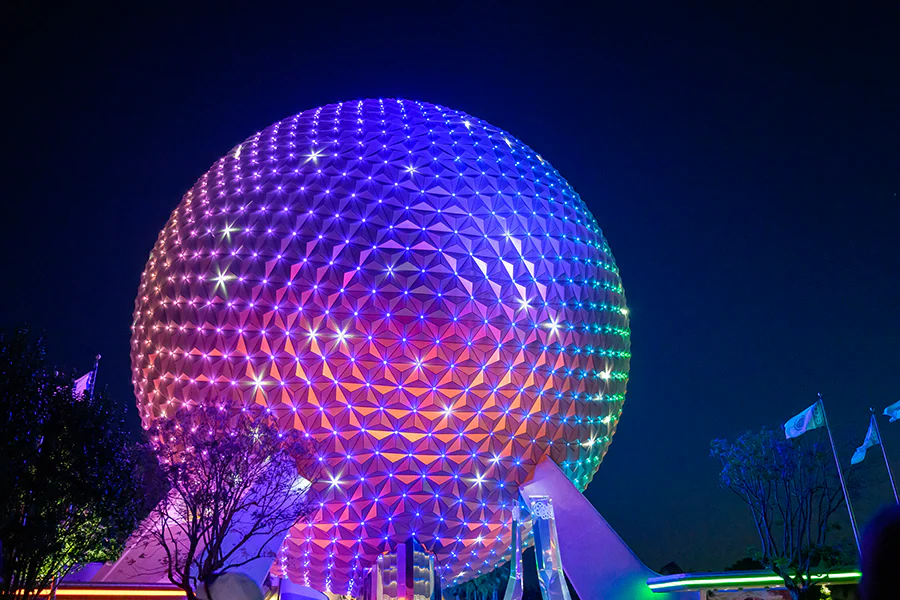
Appropriate for a park comprised of very different halves – one highlighting science and other, culture – EPCOT’s two opening “realms” have undergone very different trajectories, embodied by change and consistency, respectively.
The “landline” here shows how little of FUTURE WORLD’s 1982 self still remains. Across the park’s opening years, Future World amassed a collection of World’s Fair style pavilions – monumental embodiments of ’70s and ’80s architecture – focused on areas of science and industry: communication, technology, energy, health, transportation, imagination, agriculture & nutrition, oceans, and a pavilion embodying the possibilities of a shared 21st century where those industries all worked together toward a common good.
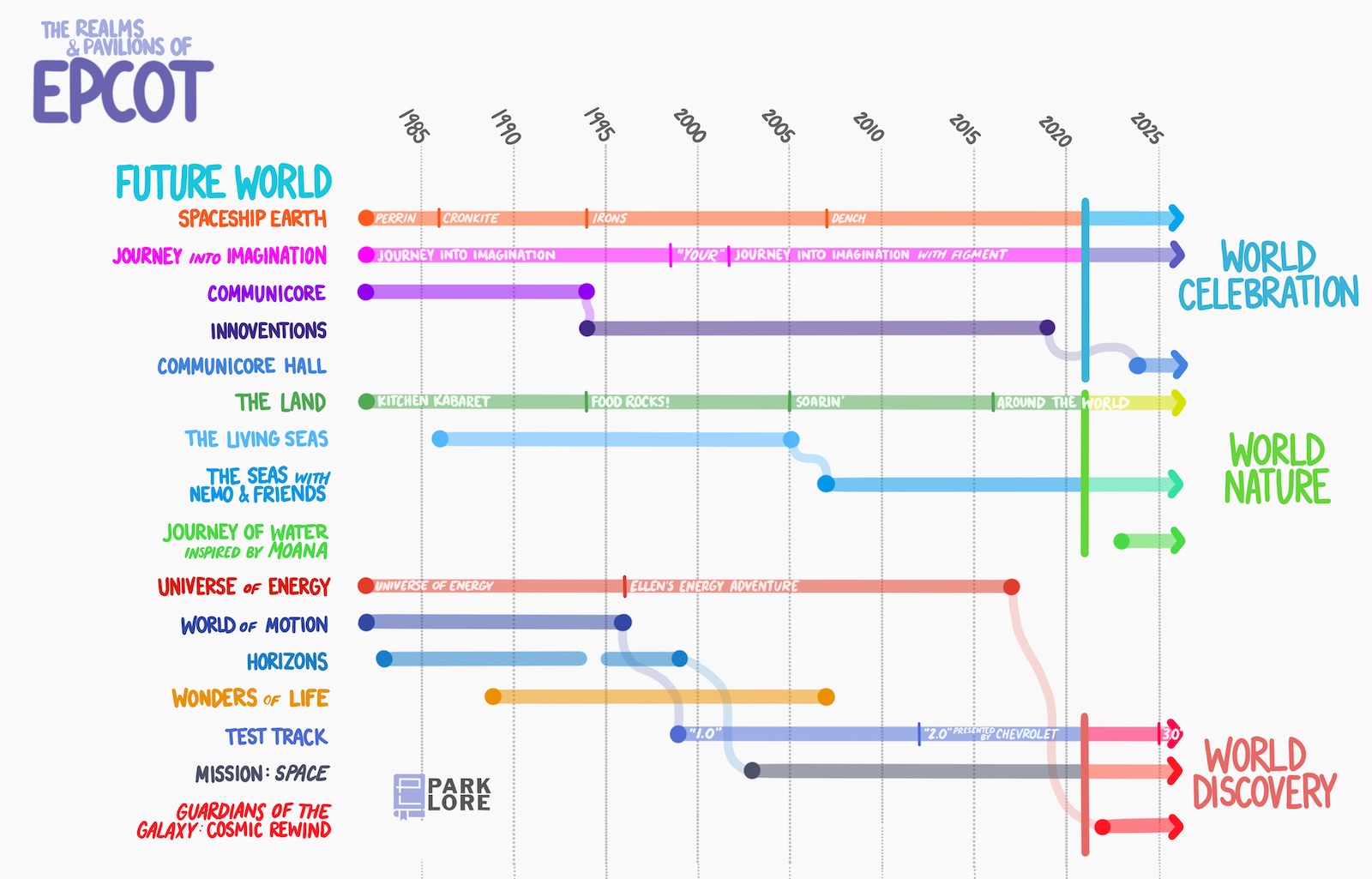
Obviously, very, very little of that remains (in EPCOT or in the cultural psyche). The original EPCOT Center was chipped away over many decades, with piecemeal additions, IP infusions, and differing corporate alignments that made the whole thing fall apart.
At the semi-annual D23 Expo, a rebirth of EPCOT was the focus, centered on not just piecemeal additions, but a long-needed, zoomed-out, holistic realignment of the park. Of course, despite the effort, the pandemic-interrupted, would-be renaissance didn’t really amount to much cohesion (and weirdly, left several of the park’s most obvious issues unsolved.) What it did do was to strangely redistrict Future World into three “neighborhoods” – WORLD CELEBRATION, WORLD DISCOVERY, and WORLD NATURE. The odd naming convention is clearly meant to align with “World Showcase,” but I guess no one considered that World Showcase is named that because it’s… a showcase of the world… not because you can put the word “World” in front of any other word to make a theme park area name.
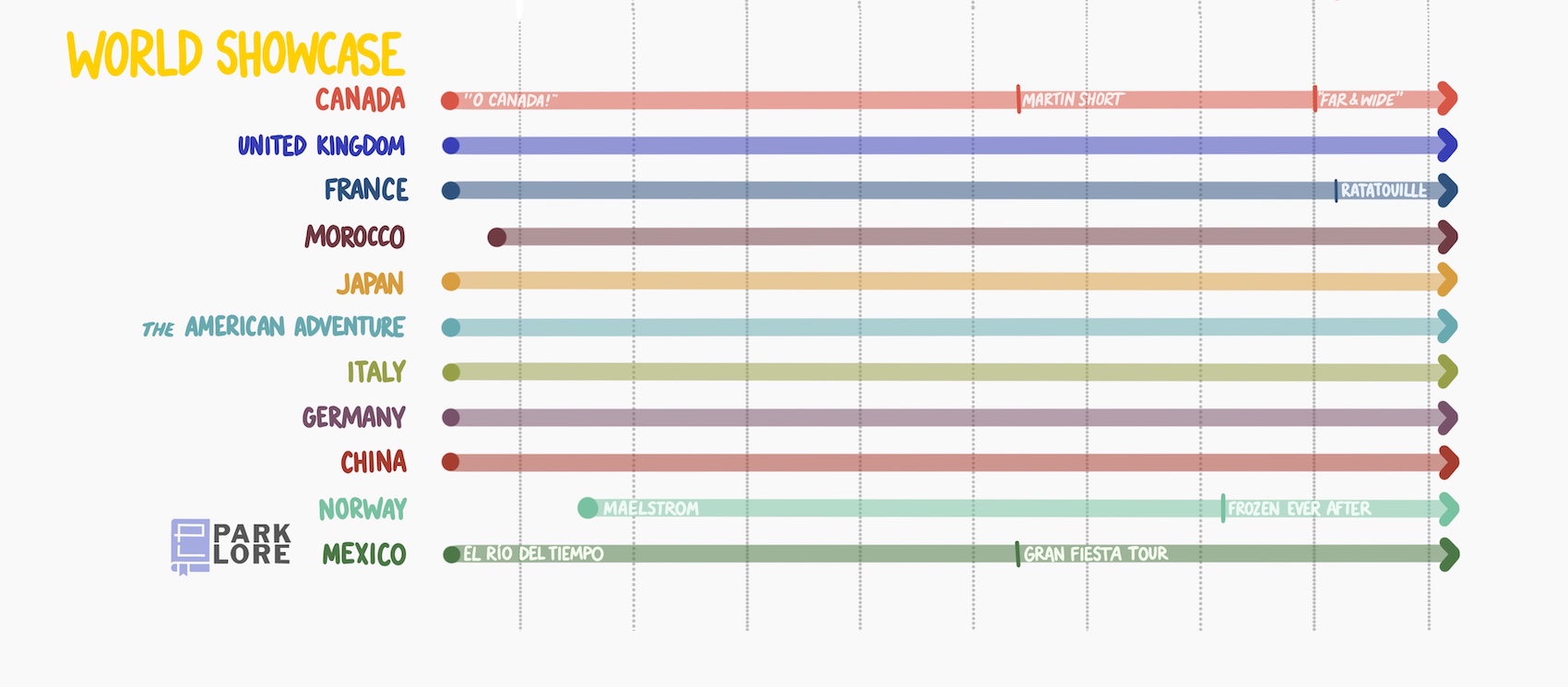
As for the original WORLD SHOWCASE, it’s been predictably unaffected by the shenanigans happening to its north. Like the stalwart countries it’s meant to showcase, the contents of World Showcase have rarely changed but for the additions of Morocco and Norway. Plenty more countries have been rumored or even announced, but as of now, it’s been over thirty years since a new country has joined EPCOT.
Instead, the name of the game has been IP infusion. World Showcase is only now beginning the slow creep of “cartoon characters” that Future World experienced in the ’80s – here, by way of the Modern Marvel: Frozen Ever After in Norway, and Remy’s Ratatouille Adventure in France. It’s hard to say whether or not any new countries will join the park in, say, the next twenty years… but it seems highly likely that by 2045, nearly all of the countries in World Showcase will have a Disney or Pixar attraction as its anchor.
You can see the full Landline for EPCOT on my Bluesky, here.
4. Tokyo Disneyland
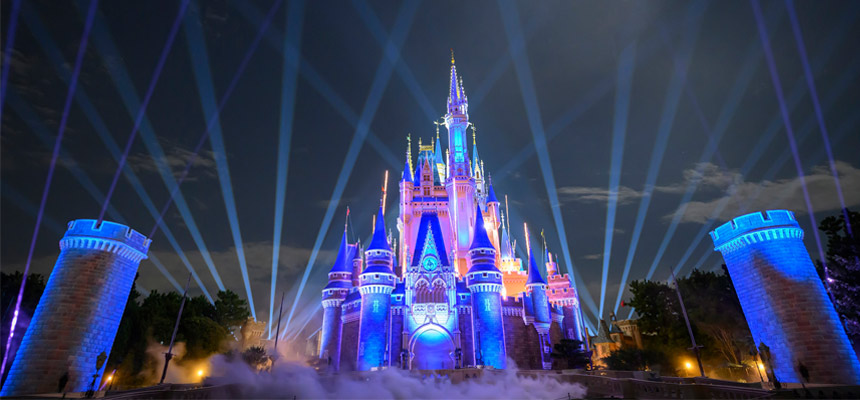
In keeping with other “Castle Parks,” Tokyo Disneyland’s lineup of lands has been highly consistent across its 40-plus years. Its “Opening Day” set includes the same lineup as Disneyland and Magic Kingdom at their openings, but with two light substitutions. Rather than Frontierland, the park has Westernland (since the word “frontier” doesn’t translate well to Japanese). Likewise, instead of Main Street, U.S.A., it features World Bazaar, which includes a “Main Street,” but also a robust “Center Street” that connects to the park’s other lands. World Bazaar also includes sights and sounds outside of the typical turn-of-the-century Main Street (like a traditional Japanese restaurant and a mid-century American doo-wop diner) and – of course – is covered by a Victorian style glass canopy.
Given that the park was essentially designed by executives from the Oriental Land Company visiting Disneyland and Magic Kingdom and plucking components of each, it’s not surprising that the park has continued to emulate its two older sister by adding Critter Country and Toontown – each conceptually copied-and-pasted from Disneyland.
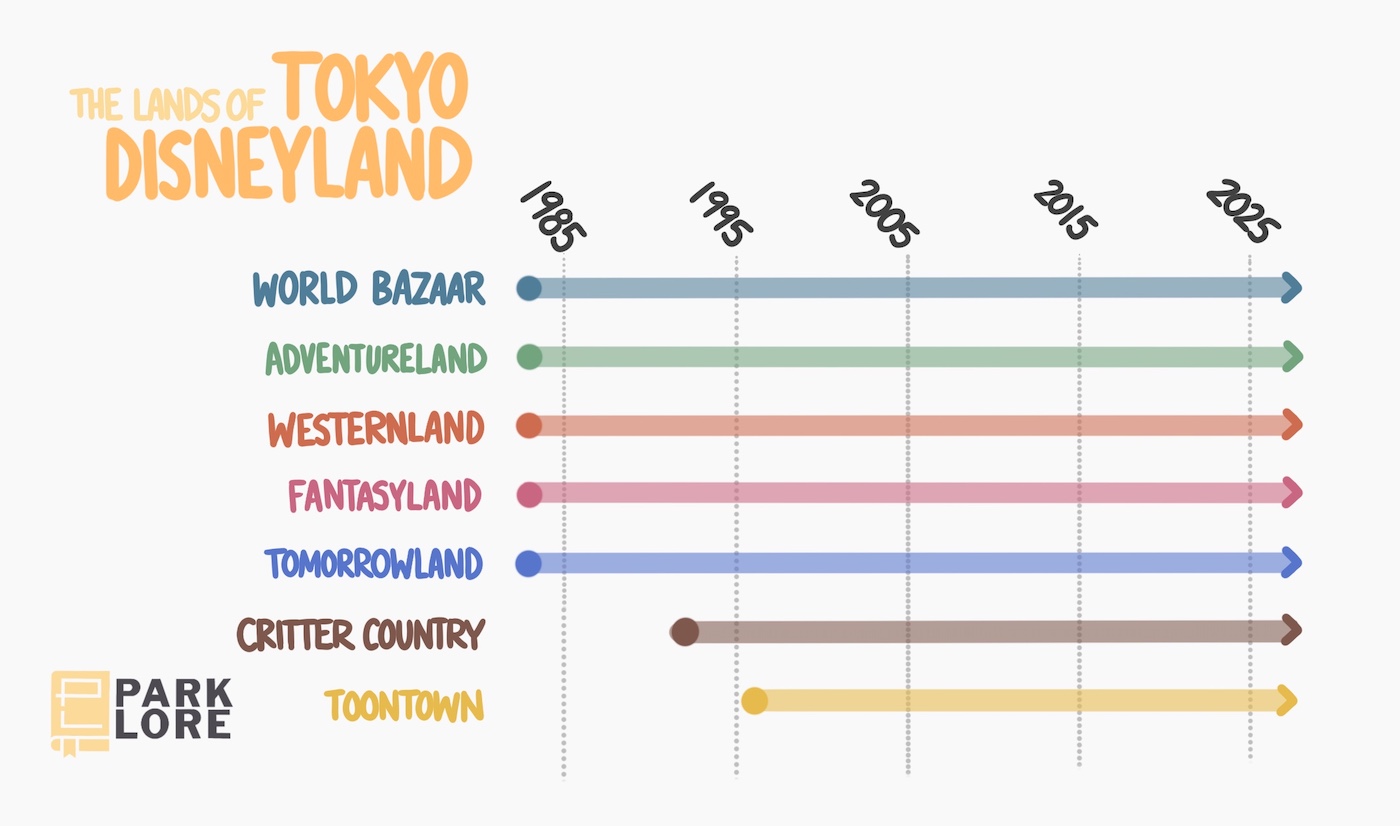
Even if its land lineup looks familiar on paper, Tokyo Disneyland is very much a destination park for Disney Parks fans thanks to its superb upkeep, incredible culture, and its enviable investment and ride collection – including an E-Ticket Winnie the Pooh trackless ride, a stunning Monsters Inc. interactive dark ride, an unusual (and first-of-its-kind) Beauty and the Beast dark ride, the last-of-its-kind Splash Mountain, and – coming soon – a one-of-a-kind custom Space Mountain rumored to use the “Omnicoaster” ride system developed for EPCOT’s Cosmic Rewind.


